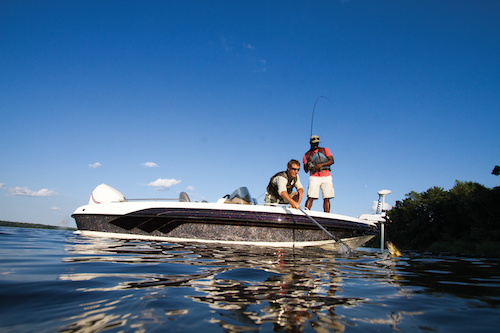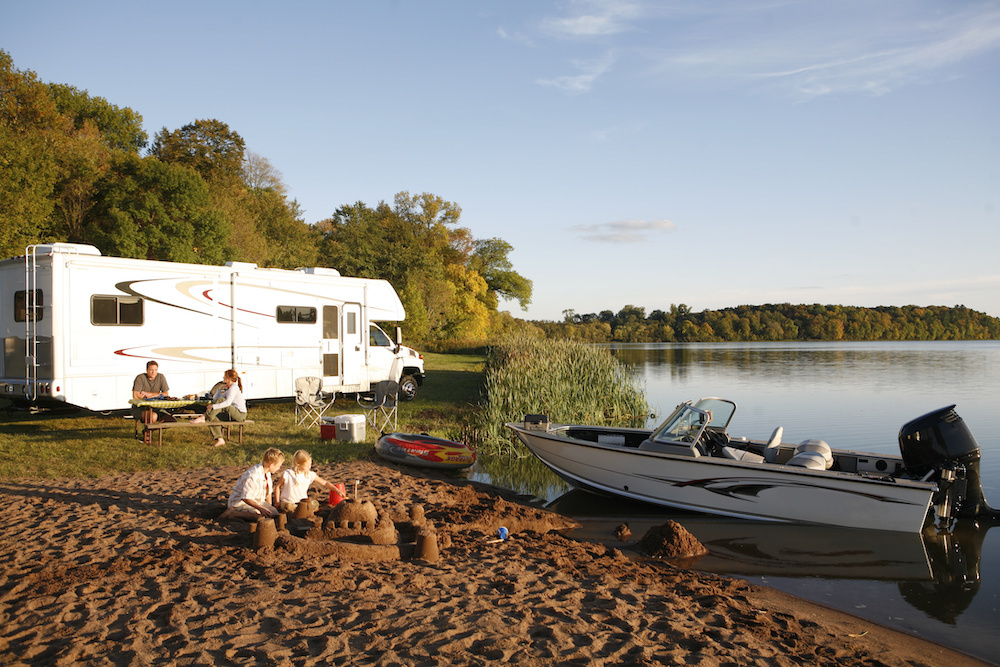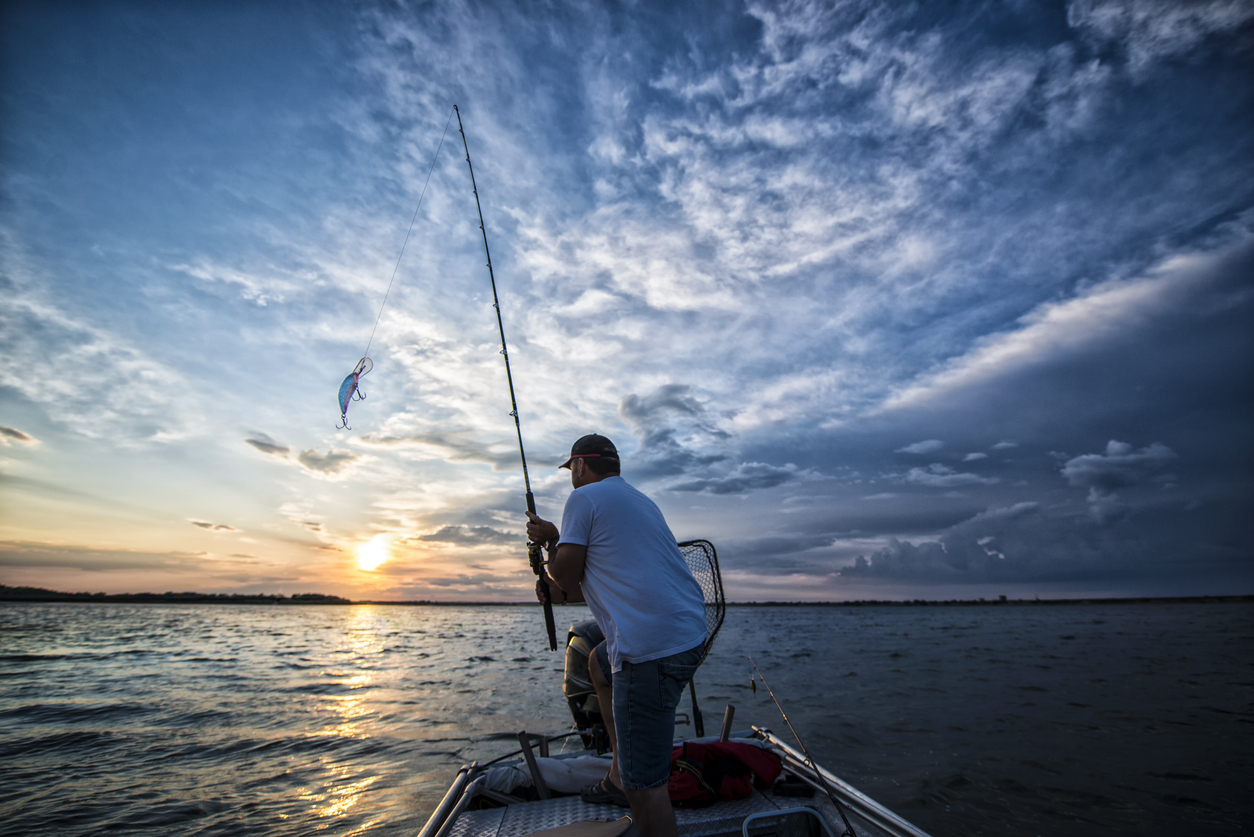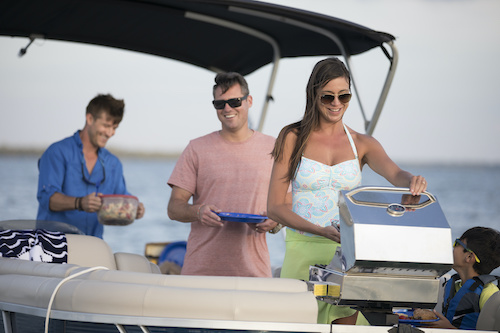With access to water and the right gear, anyone can catch themselves some fish and cook up a great meal. Perhaps nothing is more rewarding than taking that first bite of a fish you’ve caught, cleaned, and cooked yourself. To accomplish this task, it is important to know just how to proceed through every step after landing a keeper (which, admittedly, may be the hardest part). Once you've got the catching part of the equation down, you can use this guide to learn how to clean and cook up your catch, building a skillset that can serve you well for life.
How to Cook Your Catch
- Bonk and bleed out the fish.
- Remove the scales or skin.
- Open the belly and remove the innards.
- Prepare for cooking.
- Cook the fish!
Explore All-Purpose Fishing Boats
Step 1: Bonk and bleed out the fish.
In order to minimize suffering for the fish and prevent spoilage of the meat, fish must be "bonked" and bled out immediately after removing the hook. Bonking a fish will immobilize a fish and render it unconscious - a rock, stick or specialized tool applied between the eyes will work. To complete this step, use a sharp knife to cut into both the gills from the bottom up. Alternatively, use game shears to cut through the gills on both sides. Dip the fish back into the water headfirst and massage along the spine to help the blood flow out of their body. Once the flow of blood slows, put the fish in a cooler to chill while finishing out the day.
Step 2: Remove scales or skin.
Depending on what was caught that day, it may be necessary to remove the scales or skin to prep it for cooking. Fish with thin skin and smooth scales, like trout, can have their skin and scales left intact. Those with thick skin and no scales, like catfish, often need their skin removed completely to make them fit for eating. Fish with tough scales, like salmon, are best when descaled. Descaling is usually easiest to complete before cutting open the fish’s belly and removing their innards.
To remove the scales...
- Run the back of a fillet knife along the scales, working from the tail to the head.
- Put the fish in a bag, if possible, to keep the scales from flying about the area.
- Skinning, on the other hand, should be left until the end, usually after the fillets are cut.
- At that point, the skin can be removed by carefully running a fillet knife between the skin and meat.
Step 3: Open the belly and remove the innards.
Now, it is time to remove the innards, which requires that you open up the belly of the fish. To do this, follow these steps:
- Hold the fish firmly against the cutting board and run the knife through the belly from the anus to the neck.
- Do not cut too deep, however, as that could puncture the internal organs and make a mess.
- Then, reach inside and grab the innards with two fingers, starting at the neck.
- Pull down and out, removing all of the innards and discard them in the trash.
- Rinse out the fish’s belly cavity thoroughly and run the rest of it under the water as well.

Step 4: Prepare for cooking.
With the fish clean, it is time to prepare it for cooking. The way it is prepared depends on the intended cooking process. Some prefer to cut all the fish into fillets while others like steaks instead. You can also simply leave the fish whole, though the fins will need to be removed to prevent incident. Simply cut away all the fins with a pair of scissors or knife to keep the sharp bones from causing a problem. Once the fish is ready to cook, it can be placed in the fridge or freezer for later. A cooler can also keep fish fresh for a few days as long as it seals well and has the ice replenished regularly.
Step 5: Cook the fish.
Whether you made steaks, fillets, or left the fish whole will determine how to best cook the fish. In most situations, cooking will take place at home or back at the campgrounds unless the boat you're on has specialty cooking equipment on-board. The cooking equipment you have on hand will also influence your methods. You can cook them up in a frying pan, in the oven, or on a grill. Fish are even easily cooked over the campfire, which imparts a delicious, smoky flavor. If cooking fillets, drizzle the fish, front and back, with oil, then add the spices of choice. Cook in a frying pan, oven, or grill over medium heat until hot and flakey—and the skin is brown and crispy, if left on. Cook fish steaks similarly using oil to keep the meat from sticking to the pan or grill. Either way, wait until the fish starts to brown on one side before turning or it will try to stick and tear apart.
Whole fish must be prepared differently to ensure every bit of meat is cooked to perfection. Before cooking, sprinkle the inside cavity with salt, pepper, and other preferred spices. Also, consider adding lemon slices and herb bundles to beautifully impart flavor. Massage with oil, and then place on a pan or wrap in foil for cooking. Whole fish are excellent when prepared in an oven, grill, or even over a campfire. Check that the meat is done by flaking it with a fork. Once it is done, all that is left to do is serve up the fish with all the preferred sides and enjoy.
By following these steps, anyone can make the most of all their catches, transforming them into amazingly flavorful meals. All they have to do is follow the steps and a delicious dinner is moments away.
Read Next: How to Cook on a Boat
Editor's Note: Guest post submitted by Steph Young of Camping Cooks.

